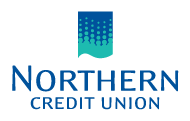Registered Education Saving Plan (RESPs) are a great way to save for your child’s, grandchild’s or loved one’s post-secondary education. But like all investment products, there are rules and limits within.
What is the tax treatment?
Even though there is no maximum annual contribution limit (as long as the lifetime contribution doesn’t exceed $50,000 per beneficiary), there are annual limits to the amount of government assistance, which could influence personal contribution timing.
Tax treatment depends on source of the money and timing:
- Personal contributions are after-tax, meaning there is no tax deduction at that time.
- Government assistance is not taxable when credited to a plan.
- While in the plan, there is no tax on income earned on either personal or government contributions.
- When taken out, all income and government assistance are taxable to the beneficiary when paid as education assistance, but withdrawal of personal contributions is not taxable.
How much government assistance can subscribers receive?
There are three main sources of federal government support:
Canada Education Savings Grant (CESG) – Canada Education Savings Grant is a 20% matching grant of up to $500 annually, to a lifetime maximum of $7,200. Carry forward room must be claimed before the beneficiary turns 18 years of age.
Additional CESG – On the first $500 of annual contributions, an extra grant of 100% is provided for low-income families, or 50% for middle-income families (these thresholds are indexed annually).
Canada Learning Bond (CLB) – For a child in a low-income family, the Canada Learning Bond provides $500 in the first year, then $100 annually to age 15, for up to $2,000 total (no personal contributions are required). The CLB is provided to low-income families in addition to CESG benefits.
How are funds withdrawn from the plan?
The subscriber may choose how much and what type of draw is to be taken from the RESP:
Education Assistance Payment (EAP) – can be paid once a beneficiary is attending qualified education, training, or an apprenticeship program (either in Canada or abroad). As a distribution of the plan’s government assistance and accumulated income, the full amount is taxable to the beneficiary.
Refund of Contributions – personal contributions can be returned to the subscriber at any time without tax consequences, as long as the beneficiary is enrolled in a qualifying program at the time. If not, the withdrawal of personal contributions may trigger repayment of recent years’ government assistance, according to a formula based on the timing of the original contributions.
Accumulated Income Payment (AIP) – this is a taxable payment of any remaining income in the plan to the subscriber, generally only if the beneficiary will not be attending school. An extra 20% tax applies, which may be avoided by rolling the AIP amount into an RRSP. The plan must then be closed by the year following the AIP.
Understanding how your investments work will allow you to save for your child’s, grandchild’s or loved one’s post-secondary education responsibly. Get started on your savings journey, book an appointment today.


